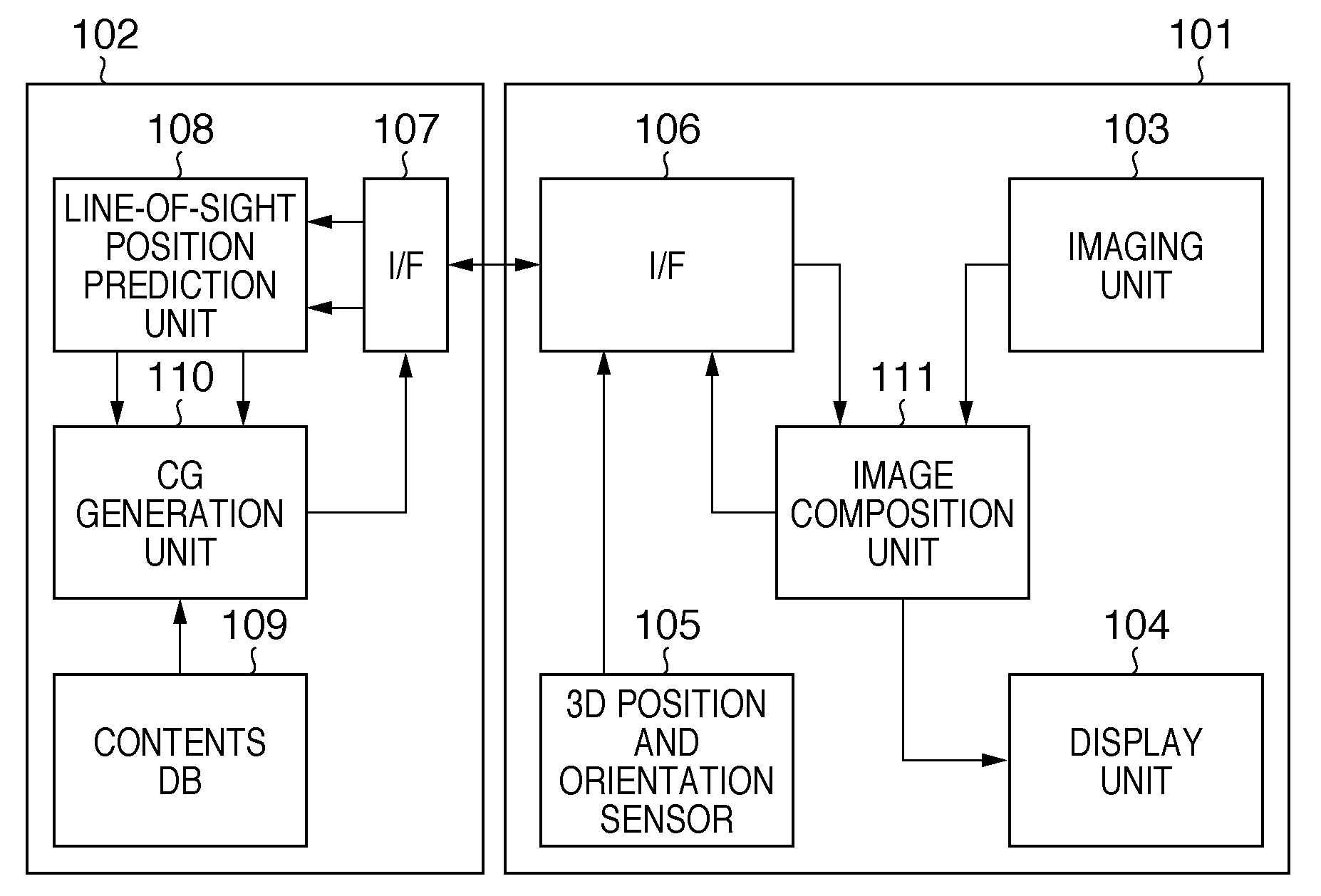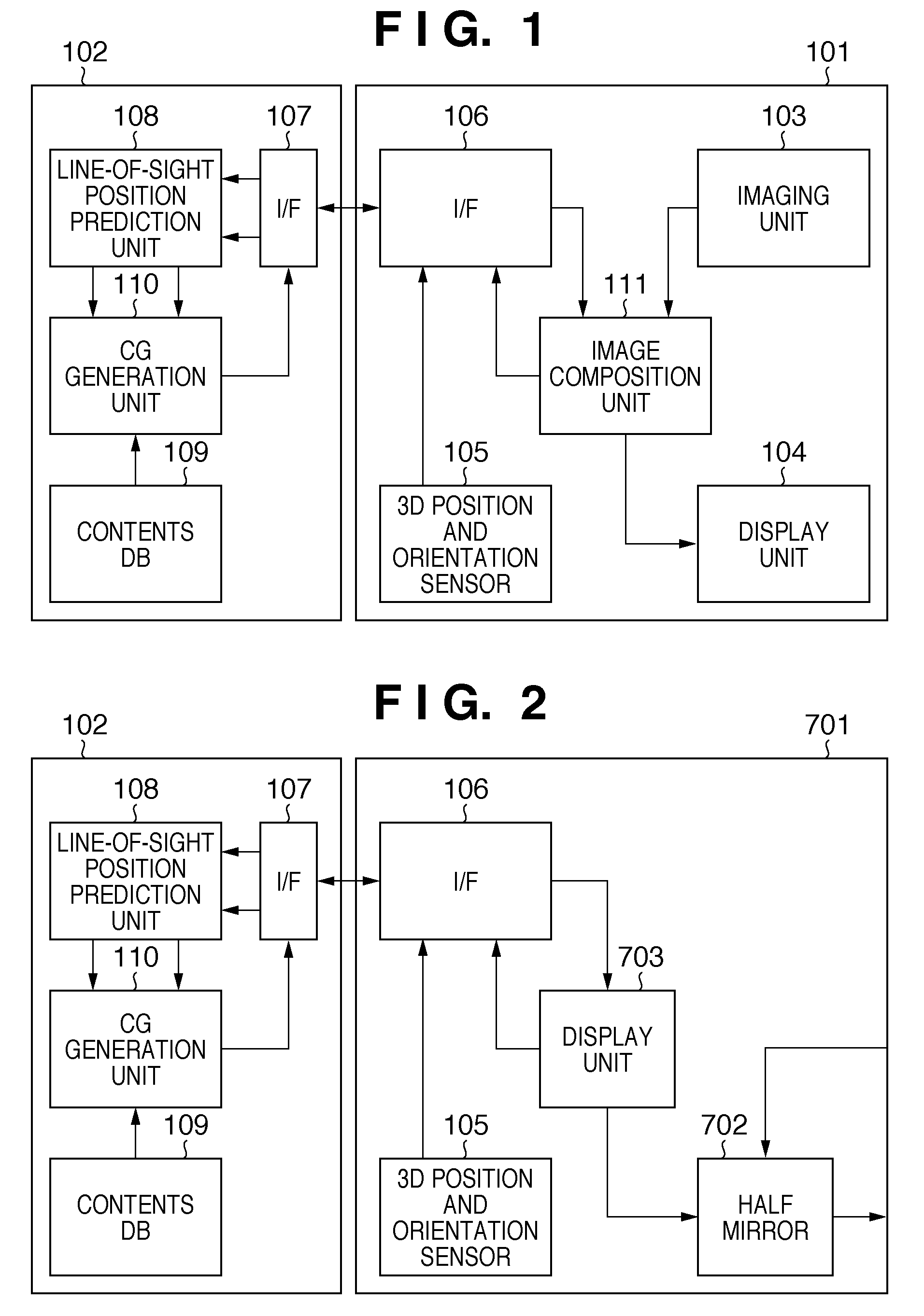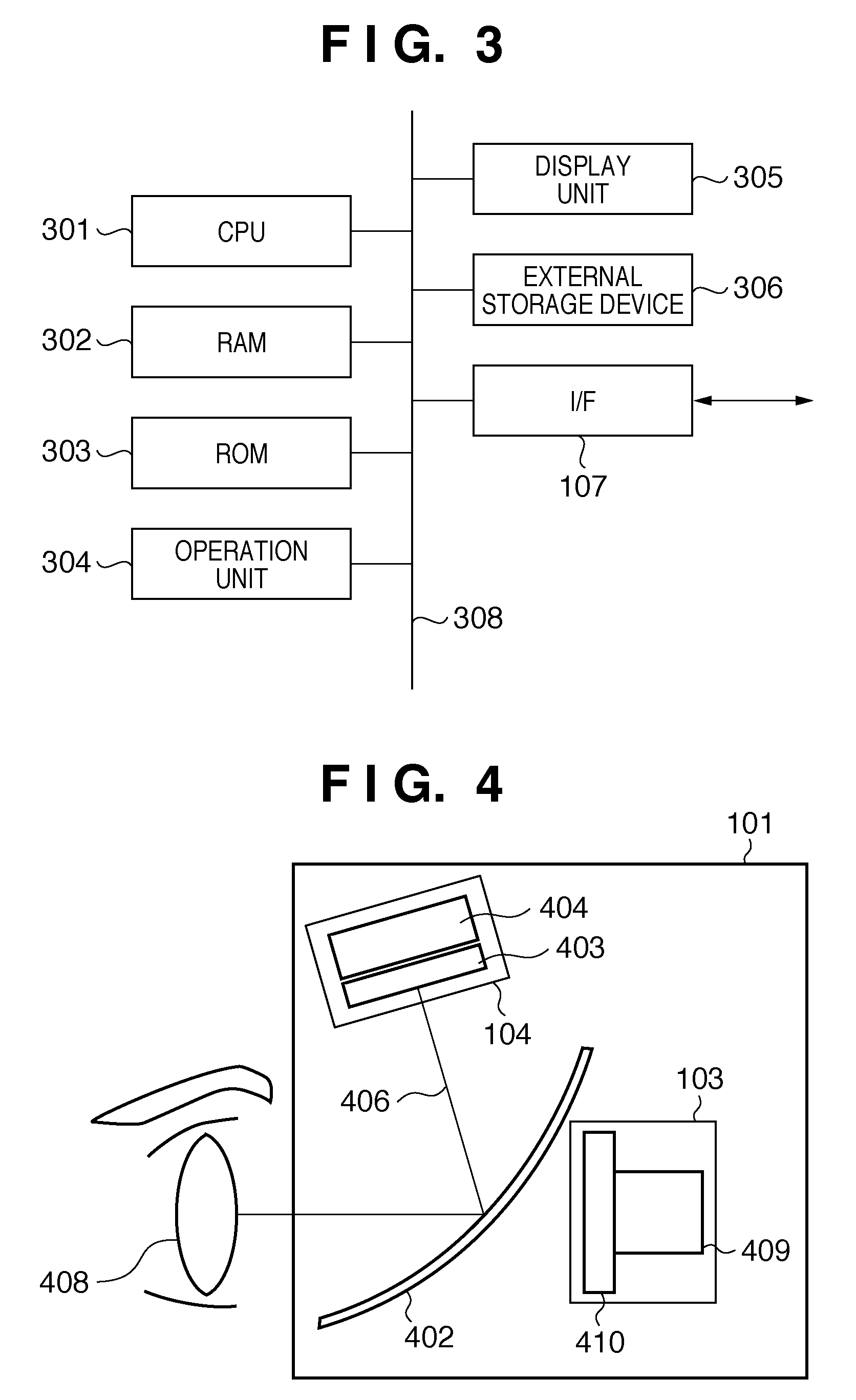Mixed reality presentation system
a technology of mixed reality and presentation system, which is applied in the field of composition technique of physical space image and virtual space image, can solve the problems of affecting the sense of reality, requiring a lot of time for the generation of cg image, and dynamic registration error between these images
- Summary
- Abstract
- Description
- Claims
- Application Information
AI Technical Summary
Benefits of technology
Problems solved by technology
Method used
Image
Examples
first embodiment
[0029]An HMD as a head mounted display used in this embodiment will be described first. FIG. 14 is a view showing a state in which an HMD user 2101 wears a video see-through HMD (to be referred to as a VHMD hereinafter) 101. The VHMD 101 incorporates a three-dimensional (3D) position and orientation sensor (not shown) used to measure the position and orientation of the viewpoint of the HMD user 2101. The 3D position and orientation sensor includes a gyro sensor, acceleration sensor, and magnetic sensor. In addition, the VHMD 101 includes an imaging unit for sensing a moving image of a physical space, and a display unit for displaying an image.
[0030]FIG. 4 is a side sectional view showing an example of the internal arrangement of the VHMD 101.
[0031]Since the VHMD 101 has a symmetric shape, FIG. 4 illustrates the internal arrangement for one eye. Reference numeral 408 denotes an eye of the HMD user 2101. Reference numeral 103 denotes an imaging unit which includes an imaging optical s...
second embodiment
[0079]In the first embodiment, a dynamic registration error between the virtual space image and physical space image is calculated using the imaging time and generation completion predicted time. In this embodiment, this dynamic registration error is calculated using a count value of a counter provided inside the line-of-sight position prediction unit 108. Assume that this counter operates to count at a frequency of 60 Hz as an image frame rate. Also, in this embodiment, assume that the 3D position and orientation sensor 105 operates at a frequency twice the image frame rate, that is, 120 Hz. Of course, the 3D position and orientation sensor 105 acquires position and orientation information for each frame image (in synchronism with an image).
[0080]Note that only differences of this embodiment from the first embodiment will be explained below.
[0081]FIG. 5 is a chart for explaining processing for generating a virtual space image to be composited to a physical space image so as to elim...
third embodiment
[0103]In the first embodiment, the video see-through HMD is used as the head mounted display. In this embodiment, an optical see-through HMD is used as the head mounted display. Only differences of this embodiment from the first embodiment will be described below.
[0104]FIG. 7 is a side sectional view showing an example of the internal arrangement of an optical see-through HMD (OHMD). The same reference numerals in FIG. 7 denote the same parts as in FIG. 4, and a repetitive description thereof will be avoided.
[0105]Reference numeral 702 denotes a half mirror, which mixes a light beam 705 from a physical space and a light beam 406 from a display unit 104, and forms an image on an eye 408 of an HMD user 2101 as a light beam 407 of a composition image.
[0106]FIG. 2 is a block diagram showing an example of the functional arrangement of a system according to this embodiment. The same reference numerals in FIG. 2 denote the same parts as in FIG. 1, and a repetitive description thereof will ...
PUM
 Login to View More
Login to View More Abstract
Description
Claims
Application Information
 Login to View More
Login to View More - R&D
- Intellectual Property
- Life Sciences
- Materials
- Tech Scout
- Unparalleled Data Quality
- Higher Quality Content
- 60% Fewer Hallucinations
Browse by: Latest US Patents, China's latest patents, Technical Efficacy Thesaurus, Application Domain, Technology Topic, Popular Technical Reports.
© 2025 PatSnap. All rights reserved.Legal|Privacy policy|Modern Slavery Act Transparency Statement|Sitemap|About US| Contact US: help@patsnap.com



